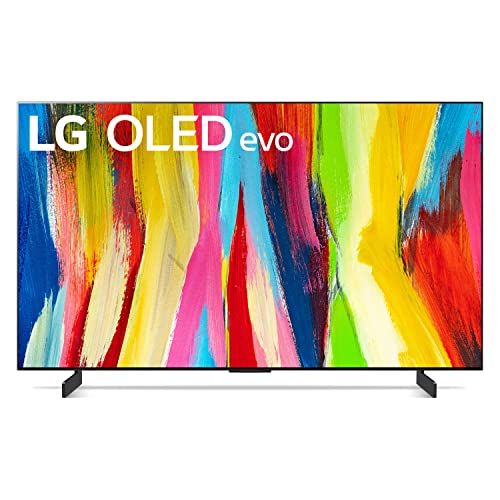Quick Links
Key Takeaways
TVs and monitors seem to be the same thing on the surface, but there are important differences that make each one suitable for specific jobs. For example, TVs are meant to be viewed at a distance but also aren't designed for color accuracy, which is vital in content creation.
Large, high-resolution computer monitors are expensive, so why not use a TV instead? There are good reasons to consider using a TV instead of a monitor, but at the same time, there are important tradeoffs to consider before you commit.
The Temptation of the TV Monitor
It's never been easier to connect a computer to a television. HDMI ports are universal on televisions and nearly as common on computers. One cable connection and both picture and sound are ready to go. This is a far cry from when you'd have to hope for a VGA port on a TV or resort to using composite or S-Video output from a specialized graphics card.
Since 4K computer monitors are expensive at almost any size, the temptation of a 4K television as a computer monitor is strong. It may seem like an economical solution if you're a gamer or a content creator working with 4K assets, but there are some important differences between monitors and TVs you should know about.
How Are TVs and Monitors Different?
The main difference between a TV and a monitor is what each device was designed for. Monitors are meant to be used by someone sitting directly in front of the screen at a close distance, possibly for long periods. A TV is designed to be viewed by multiple people at once at a distance.
This affects what the manufacturer prioritizes when it comes to panel technology, backlighting, and perhaps most importantly image processing. Monitors usually have much higher pixel densities than TVs. Crucially, monitors have negligible input lag, which benefits all forms of computer uses, but is especially prized by gamers.
TVs Are (Mostly) Too Big
If you actually want to use a TV as a monitor on a desk at distances where monitors are typically used, you may find that most options are simply too big to be practical. There are large computer monitors, with 27 to 32 inches being the common "big" monitor sizes, although not the biggest.
These days, 32" TVs are hard to find, so it's likely you'll be looking at a 42 or 48-inch TV as a monitor replacement, with 55 inches likely the upper limit of what's tolerable at shorter viewing distances.
On the other hand, if you want to use your computer at the viewing distance that televisions are designed for, this is a non-issue and probably the best way to go. That being said, there are computer monitors available in large formats above 50 inches. However, they are generally aimed for use in boardrooms and are priced for corporate budgets, so they'll likely outmatch your wallet.
Color Accuracy
For any type of content creation work where color accuracy matters, it's unlikely that a television will have the correct level of color accuracy, even after calibration, to meet the necessary standards. Precise color accuracy isn't really the design goal of a television, and with post-processing many TVs "enhance" colors to differ from what the content creator intended.
Monitors designed for photo and video editing can be calibrated (or come from the factory already calibrated) to offer a consistent, accurate image. Large-format professional monitors do exist, but they're much more expensive than televisions, and that makes sense since maintaining color accuracy on a 55-inch display is a little more complicated than on a 24-inch monitor.
Aspect Ratio and Resolution Choices
When it comes to televisions, you have one choice of aspect ratio and (at the time of writing) two choices of resolution. If you need something wider than 16:9, you'll need a monitor or an exotic television. If 1080p is too low, but 4K is too high for your needs, there's nothing between these two TV resolution standards. Whereas monitors also offer the option of 1440p displays.
Ultrawide productivity monitors, tall 16:10 monitors that are great for office work, seriously super ultra-wide monitors that provide amazing immersion, and a few more oddities are all available options in the world of monitors.
Refresh Rates
For decades the standard refresh rate on televisions has been 60Hz, meaning a maximum of 60 frames per second can be displayed. 120hz 4K televisions are slowly being adopted, primarily by console gamers that want to take advantage of the handful of games that can run at these speeds on the PlayStation 5 and Xbox Series consoles. Some of these next-generation TVs support VRR or Variable Refresh Rate. Specifically, they support the HDMI VRR standard, part of the HDMI 2.1 specifications. This means that the TV can dynamically adjust its refresh rate to match the frame rate of the console, preventing screen tearing and stutter.
This is great news and long overdue, but unfortunately, most PCs don't have HDMI 2.1 GPUs to take full advantage of a 4K 120Hz screen with VRR. That's because the DisplayPort standard is more popular for monitors, and PCs generally support the FreeSync or NVIDIA G-Sync standards. So unless you have a very modern graphics card with an HDMI 2.1 port, using a TV as a monitor comes with significant limitations.
PC monitors offer a wide range of refresh rates. From entry-level monitors that run at 60Hz to ultra-fast 300+ Hz displays for competitive gaming. There's a refresh rate option at almost every point between those two extremes. If you buy a monitor that supports the same variable refresh technology as your GPU, you'll get to see every frame your computer produces presented flawlessly.
OLED Technology Can Have Image Retention Problems
The gold standard for image quality, response times, motion clarity, color vibrancy, contrast, and brightness is OLED technology. TV enthusiasts usually aspire to own an OLED, and prices on these TVs have dropped significantly. OLED technology has been much slower to penetrate the PC monitor market, and there are only a few expensive options at the time of writing.
One major reason for this is image retention (also called burn-in), where static elements in the image leave an impression on the screen even when the picture changes. Most image retention is temporary, but if the same elements (such as a taskbar) stay on-screen for too long, it can be permanent.
You can mitigate this by using a screensaver when you aren't actively working, and OLED TVs have built-in protection systems to deal with things like the interface elements of video games. With later OLED models, image retention isn't as serious, but it's still a key consideration.
Some TVs Are Designed for Double Duty
TV manufacturers have taken note of the desire to use these large displays for computers. Many TVs offer a "PC mode" that strips away all of the post-processing and other fancy display features to give you a monitor-like experience. Of course, this may also make the on-screen image much less attractive, but at least it's functional. Likewise, if you mainly want to play video games, a "game mode" is also common on modern TVs. This removes a large amount of post-processing to make games feel more snappy.

LG 42-Inch Class OLED evo C2
The 42-inch C2 is an affordable OLED at a perfect size for a monitor, supporting the latest variable refresh technologies for gaming, and offering all the benefits of OLED, as long as you have an HDMI 2.1 GPU!
There are now also televisions that are squarely aimed at users who want to connect gaming computers to them. For example, the LG C2 OLED TVs support both G-Sync and FreeSync, although they still lack a DisplayPort input, so you must have an HDMI 2.1 output on your GPU to take full advantage.
TV or Monitor?
Clearly, the answer to this question is complicated, but we can boil it down to a short list of points:
- If you want to do desk-based productivity or gaming, a monitor is the way to go.
- A TV is a great choice for playing PC games at proper viewing distances.
- For any content creation work that requires color accuracy or screen consistency, a suitable monitor is the right choice.
Of course, you can have both a TV and a monitor connected to your computer and simply enjoy the content each display is best suited for as needed!

